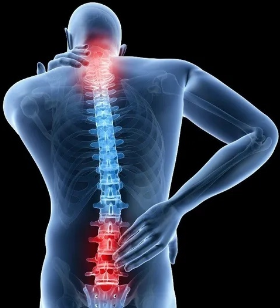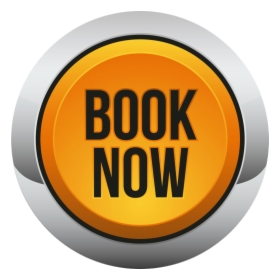
Best Doctor for Neck pain and lower back pain in South Mumbai
Neck pain is a common issue that affects individuals of all ages and can range from mild discomfort to debilitating pain. It may be a result of poor posture, overuse, injury, or a more serious underlying condition.
Back pain is a pain in the neck region resulting in loss of function causing disability is common. Pain in the neck is a very common complaint and is only second to the common cold in sickness absenteeism.
Symptoms of Neck and Lower Back Pain
Neck pain, or cervicalgia, manifests as discomfort or stiffness in the neck region. Common symptoms include:
• Muscle Strain: Overuse or poor posture can lead to muscle tension and pain.
• Herniated Discs: Discs between the vertebrae may bulge or rupture, causing nerve compression.
• Cervical Stenosis: Narrowing of the spinal canal can compress nerves, leading to pain.
Lower back pain, or lumbago, presents as discomfort in the lower back area. Symptoms often include:
• Muscle Strain: Sudden movements or lifting heavy objects can strain back muscles.
• Herniated Discs: Similar to the neck, discs in the lower back can herniate, causing pain.
• Sciatica: Compression of the sciatic nerve can cause pain radiating down the leg.
Causes of Neck and Lower Back Pain
The causes of neck and lower back pain are multifaceted and can include:
• Overuse and Strain: Repetitive movements or improper lifting techniques can strain muscles and ligaments.
• Poor Posture: Prolonged sitting or standing with improper posture can lead to musculoskeletal issues.
• Degenerative Disc Disease: Age-related changes can cause discs to lose hydration and elasticity, leading to pain.
• Injuries: Accidents or sudden movements can result in sprains, strains, or fractures.
• Medical Conditions: Conditions like arthritis, osteoporosis, or infections can contribute to pain.
Advanced Techniques
1. Physical Therapy
The goal is to reduce pain, prevent future injuries, and restore normal function. Specific exercises may include:
• Stretching and Strengthening: Exercises designed to stretch tight muscles and strengthen weak ones, focusing on the neck, spine, and surrounding muscles.
• Manual Therapy: Techniques such as spinal manipulation or mobilization to improve joint mobility and relieve muscle tension.
• Postural Training: Educating patients on maintaining proper posture during daily activities to reduce strain on the spine and muscles.
2. Medications
Medications can provide short-term relief from pain and inflammation, particularly during the acute phase of neck or lower back pain. These may include:
• Nonsteroidal Anti-Inflammatory Drugs (NSAIDs): Drugs like ibuprofen or naproxen help reduce inflammation and alleviate pain.
• Muscle Relaxants: These are prescribed to relieve muscle spasms and tightness that often accompany neck and back pain.
• Acetaminophen: A common over-the-counter pain reliever that can reduce discomfort.
• Opioids (with caution): In cases of severe pain, opioids may be prescribed for short-term relief under strict medical supervision.
3. Epidural Steroid Injections
Epidural steroid injections involve the injection of a corticosteroid (anti-inflammatory medication) into the epidural space of the spine. This procedure targets the nerve roots that may be compressed by herniated discs, stenosis, or inflammation. The injection reduces inflammation around the nerves, providing relief from pain, numbness, and tingling. This treatment is particularly helpful for patients with sciatica or radiculopathy caused by spinal conditions.
4. Minimally Invasive Procedures
For patients who do not respond to conservative treatments, minimally invasive procedures can offer effective relief. These procedures include:
• Nerve Blocks: Local anesthetics are injected near the nerve root to interrupt pain signals, providing temporary pain relief.
• Radiofrequency Ablation: This technique involves using heat from radio waves to destroy nerve fibers responsible for transmitting pain signals. It is often used for conditions like facet joint arthritis and degenerative disc disease.
• Endoscopic Discectomy: In cases of herniated discs, an endoscopic discectomy allows the surgeon to remove or repair the damaged disc with a small incision and minimal tissue disruption.
5. Spinal Decompression Therapy
Spinal decompression therapy is a non-surgical treatment aimed at relieving pressure on the spine. Using a traction table, this technique gently stretches the spine to create negative pressure between the vertebrae, which can reduce disc bulging and herniation, and promote healing of the affected discs. This therapy can be particularly helpful for patients with disc issues, sciatica, and spinal stenosis.
6. Chiropractic Care
Chiropractic care is another alternative treatment method for neck and lower back pain. Chiropractors use spinal manipulation (adjustments) to align the vertebrae and relieve pressure on the nervous system. This can improve mobility, reduce inflammation, and restore normal movement. Chiropractors often combine adjustments with other therapies like massage and heat therapy.
7. Stem Cell Therapy
In recent years, stem cell therapy has emerged as a promising treatment for degenerative disc disease and chronic back pain. Stem cells have the potential to regenerate damaged tissues and promote healing. The stem cells are typically derived from the patient’s own bone marrow or adipose tissue and injected into the damaged areas of the spine. Although this treatment is still being researched, it has shown potential for patients with severe or chronic pain who have not found relief from other treatments.
8. Regenerative Medicine
Regenerative medicine involves the use of biological therapies, such as platelet-rich plasma (PRP) injections, to stimulate healing in damaged tissues. PRP is derived from the patient's own blood and contains growth factors that can accelerate tissue repair. This treatment is particularly beneficial for conditions like tendonitis, ligament injuries, and osteoarthritis of the spine.
9. TENS Therapy (Transcutaneous Electrical Nerve Stimulation)
TENS therapy uses a small device that delivers low-voltage electrical currents through electrodes placed on the skin near the painful area. These electrical impulses help block pain signals from reaching the brain and can stimulate the release of endorphins (natural pain relievers). TENS therapy is non-invasive and can be used for chronic neck and back pain, providing temporary pain relief.
10. Lifestyle Modifications and Ergonomic Adjustments
Beyond clinical interventions, Dr. Siraj Khan emphasizes the importance of lifestyle changes in the long-term management of neck and back pain. Patients are advised to:
• Maintain a Healthy Weight: Excess weight places additional stress on the spine and can exacerbate pain.
• Ergonomic Adjustments: For individuals who sit for long periods (e.g., office workers), making adjustments to their workspace (e.g., using a supportive chair, proper screen height, etc.) can help prevent strain on the spine.
• Regular Exercise: Engaging in low-impact exercises like swimming, walking, or yoga can keep the spine flexible and strong, reducing the risk of pain flare-ups.
Conclusion
Neck and lower back pain are complex conditions requiring personalized treatment plans. Dr. Siraj Khan's expertise in neurology and his commitment to patient care make him a leading choice for individuals Best Doctor for Neck pain and lower back pain in South Mumbai seeking relief from these ailments. By addressing the root causes and employing advanced treatment modalities, patients can achieve improved mobility and quality of life.

